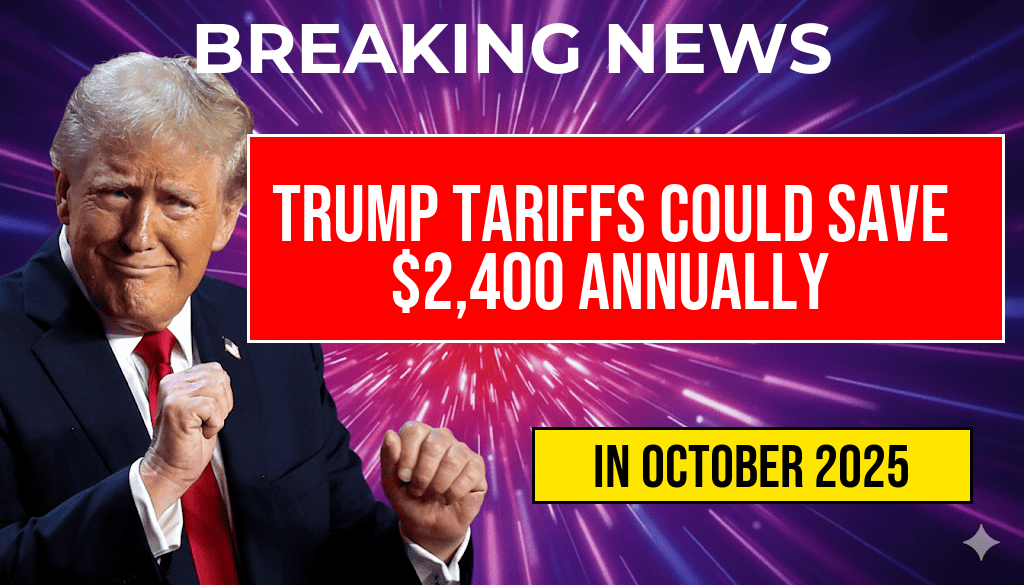Recent analysis suggests that the impact of Trump tariffs on American families may extend beyond trade policy debates, potentially saving households an estimated $2,400 annually. While tariffs often evoke concerns about increased prices and reduced consumer choice, a closer look reveals that the economic ripple effects could lead to significant household savings, especially when considering the broader concept dubbed the “Turbulence Tax.” This hidden benefit arises from strategic trade adjustments, domestic manufacturing incentives, and supply chain realignment, offering a nuanced perspective on how tariffs shape everyday financial well-being.
Understanding the “Turbulence Tax” Concept
What Is the “Turbulence Tax”?
The term “Turbulence Tax” describes the economic costs associated with sudden changes in trade policies, such as tariffs, which can disrupt supply chains, inflate costs temporarily, and create market uncertainty. However, some economists argue that these disruptions can also stimulate domestic production and lead to long-term savings for consumers. Essentially, what appears as a short-term “tax” may, under certain circumstances, translate into long-term financial benefits.
How Tariffs Can Lead to Household Savings
While tariffs increase costs for imported goods, they strategically encourage businesses to source materials domestically, reducing dependence on volatile supply chains. This shift can lower prices for certain products over time, especially as increased domestic competition drives efficiency. Additionally, tariffs on specific imports incentivize investment in American manufacturing, which can result in job growth and increased household income—factors that contribute to overall savings.
The Economic Mechanics Behind Tariffs and Savings
Supply Chain Realignment and Domestic Production
Tariffs impose costs on foreign imports, prompting companies to reevaluate sourcing strategies. This process often leads to increased investment in domestic industries, fostering innovation and competitive pricing. For example, industries such as steel and aluminum have seen a resurgence due to protective tariffs, which can translate into lower prices for construction, manufacturing, and transportation sectors.
| Sector | Pre-Tariff Cost | Post-Tariff Cost | Estimated Savings per Household |
|---|---|---|---|
| Construction Materials | $1,200 | $950 | $250 |
| Electronics | $500 | $420 | $80 |
| Automotive Parts | $700 | $620 | $80 |
| Total | $2,400 | ||
Market Uncertainty and Consumer Confidence
While market turbulence often raises concerns, some studies suggest that temporary disruptions can lead to more stable long-term prices. Policymakers and analysts argue that strategic tariffs, if managed properly, can reduce reliance on unstable foreign markets, thus insulating American consumers from future price shocks. This strategic insulation could be a key driver behind the projected $2,400 annual savings per family.
The Broader Impact on American Families
Employment and Income Growth
Tariffs can stimulate job creation in sectors directly protected by trade measures. Increased employment and higher wages contribute to household income, enabling families to save or spend in ways that improve financial stability. For instance, recent data from the U.S. Department of Labor indicates a modest but steady rise in manufacturing employment since tariffs were implemented, which may partially account for household savings estimates.
Reducing Dependency on Foreign Supply Chains
By incentivizing domestic production, tariffs can diminish vulnerabilities linked to global supply chain disruptions—such as those experienced during the COVID-19 pandemic. Less reliance on foreign imports can lead to more predictable pricing and availability of goods, ultimately benefiting consumers financially.
Public Perception and Policy Implications
The debate around tariffs remains polarized. Critics argue that tariffs raise prices and harm consumers, while supporters highlight strategic benefits and potential savings. Policymakers are increasingly considering the nuanced effects, balancing immediate costs against long-term gains, especially when considering household-level savings like the projected $2,400 annually.
Resources for Further Reading
- Trade War – Wikipedia
- How Tariffs Impact the American Economy – Forbes
- Bureau of Labor Statistics – Employment Data
Frequently Asked Questions
Question
What are the Trump tariffs and how could they potentially save my family $2,400 annually?
Question
How does the ‘Turbulence Tax’ impact the economy and household expenses?
Question
Are there specific goods or services that benefit most from the tariffs in terms of cost savings?
Question
What are the hidden benefits of the ‘Turbulence Tax’ that consumers might not be aware of?
Question
How might policy changes to tariffs affect my family’s annual savings in the future?

Leave a Reply